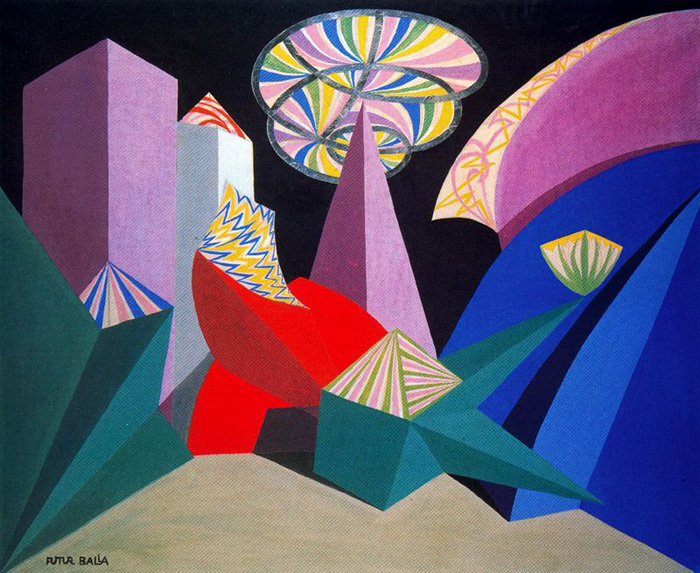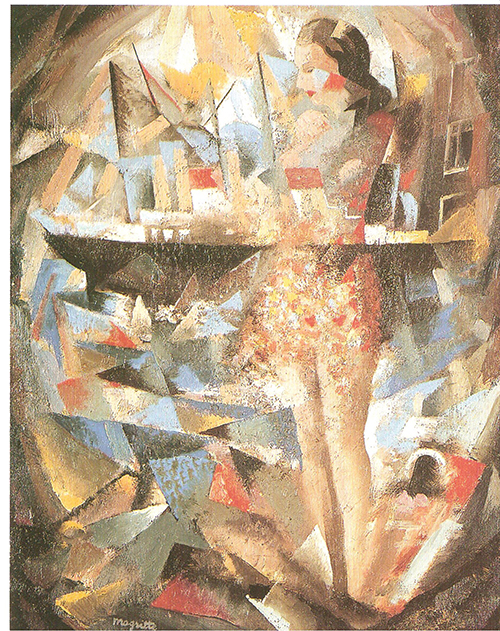Wednesday, 28 September 2011
Wednesday, 21 September 2011
Futurism in History
Futurism was a direction rather than a style. Its encouragement of eccentric behaviour often prompted impetuous and sometimes violent attempts to stage imaginative situations in the hope of provoking reaction.
Through a barrage of manifestos that dealt not only with various aspects of art, such as painting, sculpture, music, architecture, and design, but with society in general, the Futurists proclaimed the cult of modernity and the advent of a new form of artistic expression, and put an end to the art of the past. The entire classical tradition, especially that of Italy, was a prime target for attack, while the worlds of technology, mechanization, and speed were embraced as expressions of beauty and subjects worthy of the artist's interest.
The Cubists' rational form of experimentation, and intellectual approach to the artistic process, also contrasts with the Futurists' vociferous and emotive exhortations for the mutual involvement of art and life, with expressions of total art and provocative demonstrations in public. Cubists held an interest in the objective value of form, while Futurists relied on images and the strength of perception and memory in their particularly dynamic paintings.
 |
| Feu d'artifice - Giacomo Balla |
 | ||||||||||||||
Jeunesse - Rene Magritte - 1924 |
What is "Pre-futurism"?
"Pre-futurist": A dysfunctional marriage between the utopian, the surreal and the future, yet grounded in the present and the now because of the limitations at the moment. It looks towards the future from the seat of post-modernism; what could technology bring in terms of new materials, new construction methods? What would architecture be when constrained by space- building up and though? When people are more concerned about sustainability and revival? "Pre-futurism" is a view of how buildings could look in another century from now "the future", without going through the development of the first fifty years.
Architects that come to mind: Zaha Hadid, Frank Gehry...
"Pre-Futurism is not one of those feel-good "carpe diem" movements or anything nearly so trite. How could we possibly hope to seize the day when the day so completely seizes us?
Pre-Futurism is not stuck in the moment, ignorant of consequences and empty of plans, doomed to future failures by repetition of a forgotten history. Pre-Futurism expands the moment, transforms it to Now, and includes in it consequences, plans, and a very long memory.Pre-Futurism ain't about to get all hung-up on what's to come, anyhow, man. Pre-Futurism ain't gonna sit around moping over what coulda been. Pre-Futurism needs nothing more than Now for motivation."
Architects that come to mind: Zaha Hadid, Frank Gehry...
What Could A "Pre-futurist" Building Look Like?
Friday, 16 September 2011
Thursday, 15 September 2011
Building
Wednesday, 14 September 2011
Interior - Showing light effects
Monday, 12 September 2011
Lasercutting
The cut out parts from the "open air spa" level. Make interesting island shapes. Could be used for the urban private part multifunctional area (sitting, steps, lying down), as they can be arranged to make overhangs for privacy/reading, gentle slopes for sitting, or tables for study areas.
 |
| A "Table" and seat made by the two islands. |
 |
| Compelling, interesting shapes. This could be a group area or the steep side used for private study. |
 |
| Play area for kids? |
Sunday, 11 September 2011
Building Take #2
 |
| Playing around with elements of football. Wrapped the field lines in a random way around the object. |
 |
| Working out the dimensions and how to arrange the shapes. |
Friday, 9 September 2011
Thursday, 8 September 2011
Initial Concept
3D Tetris made into a building form. The separate shapes twist into negative/positive spaces left by the other shapes. There aren't defined levels, the "floors" are separated by each block.
Monday, 22 August 2011
Materials!
Could possibly take an aspect of these and develop it into a wall texture, material or facade.
 |
| Looking at material, texture, colour, logo. And the extreme coolness that is Chelsea and Lampard. |
 |
| The panels could be used as a way for the building facade to fit together or maybe it could be the floor material. |
 |
| The studs could be an interesting pattern for the ground, scaled up in size as the "obstacles" that people play around. |
 |
| Beckham is cool. That is all. |
Thinking about SPACE
Some different "spaces" and moods. Which aesthetic am I going for?
 |
| "Industrial, powerful". This was actually an ad- the players playing a game balanced on the thick steel beams. The beams were part of the building structure. |
 |
| Warmer kind of atmosphere. Played on concrete field. More casual. |
 |
| Even less space than before in an alley. Interesting graffiti art in the background. |
Banned Commercials - Nike - Soccer vs ninjas
Testing ball control, agility. This time they're playing in a very nice place- opposite architecturally to the first videos I posted.
Just because you can never have too much soccer, I'll add this too ;)
Airport football / Nike Brazil commercial
Again, playing around obstacles/people. Football isn't necessarily played on open fields- there's indoor soccer, street soccer, juggling...
Nike Secret Tournament-The Cage(full)
Playing in a cage- limited space. How could I use that to inform my interior space? Or the mood/colour/materials?
THIRD PROJECT: GATHERING
Objective: To create a five story building, each level specifically dedicated to one "interest"/client's start-up business.
Things to think about:
Type of Space
External/Internal
Level of building it should be on
Equipment needed to run the business/es
Facilities: changing rooms etc
How the building is in context to other buildings around it/access to other amenities like food, transport
Materials
Form and Function
Site
My Proposal:
Due to the lack of fields/space in the city, I aim to create a start-up business that allows people to play football and experience the feeling of freedom that comes with it (which will be especially hard because it will be in such a confined 64sqm area). They may also be able to watch live games of football, so maybe a bar is also necessary.
Materials/Space:
A cantilevered space stretching from the building may be needed to extend the available space- maybe it could go around or be supported by the buildings that are in proximity. The ideal position would be the middle/top of the building in order to maximise the amount of fresh air that permeates the building by elevating the business higher over the other surrounding buildings.
Materials may include netting, fake grass/turf, or reflect the material of player jerseys or logos. The space could either be open like a playing field or more gritty/urban/industrial like street soccer (concrete, spray paint- good idea to bring the person doing spray paint into my building) and include interchangeable walls or obstacles.
Things to think about:
Type of Space
External/Internal
Level of building it should be on
Equipment needed to run the business/es
Facilities: changing rooms etc
How the building is in context to other buildings around it/access to other amenities like food, transport
Materials
Form and Function
Site
My Proposal:
Due to the lack of fields/space in the city, I aim to create a start-up business that allows people to play football and experience the feeling of freedom that comes with it (which will be especially hard because it will be in such a confined 64sqm area). They may also be able to watch live games of football, so maybe a bar is also necessary.
Materials/Space:
A cantilevered space stretching from the building may be needed to extend the available space- maybe it could go around or be supported by the buildings that are in proximity. The ideal position would be the middle/top of the building in order to maximise the amount of fresh air that permeates the building by elevating the business higher over the other surrounding buildings.
Materials may include netting, fake grass/turf, or reflect the material of player jerseys or logos. The space could either be open like a playing field or more gritty/urban/industrial like street soccer (concrete, spray paint- good idea to bring the person doing spray paint into my building) and include interchangeable walls or obstacles.
Thursday, 18 August 2011
Finished Detail
This is a cross-section of the part where the tunnel goes through a building at 1:1 scale. The detail is meant to be horizontal, as it shows the side of the tunnel.
 |
| Bolt going through the concrete- the tension of both bolts at either end snapped the concrete partially through the middle but the metal place keeps both sides in place. |
Tuesday, 16 August 2011
3D Concept
Made in 3ds max. Just simple pics of the realised concept in different views. It can be seen as a section of the whole pipeline or an independent "pod".
Subscribe to:
Posts (Atom)
































